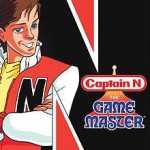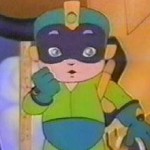Despite my classes starting back up, I have been able to do a couple of retro game replays. I decided to continue on my Megaman kick by replaying Megaman 3 and 4. I may get to 5 before I get too busy but we’ll see. So here’s a nice little review of Megaman 3 for you all.
Story
The story is pretty much the same as it was before – Dr. Light has something good, Dr. Wiley steals it, Megaman has to go save the world. This time, the story focused on Dr. Light creating a new cyborg construct known as Gamma which would supposedly help fight Dr. Wiley’s robot masters in the future. As soon as Dr. Wiley got wind of this, he launched a technique to steal Gamma (how he steals something that big without anyone noticing, I don’t know). Once again, Dr. Light calls Roll to don the blue helmet and become Mega Man to battle the monsters and restore order. Of course, Megaman happily accepts the requests and dashes off to face 8 robot masters and retrieve Gamma.
Gameplay
Much like the other Megaman series’ games, Megaman 3 features exactly what you would expect. You face the robot masters in a series of themed worlds. Once you beat them, Megaman acquires their power and uses it to face off against other robot masters. One interesting change that occurred in this game that has stuck with the rest of the series (even up to the MMZ era) is the introduction of the ‘slide’ technique. A player can press down and the jump button and Megaman will turn sideways and slide through small crevices in the game. In some cases, the player cannot even pass a section of the level without using the technique.
This game also features the first appearance of Protoman (named Breakman for some reason) who is later revealed to be Megaman’s brother. For some reason, Protoman will randomly show up in the game at various points in the game when Megaman lands in certain rooms. You will know he is coming when you hear a high-pitched whistle melody and the screen seems to freeze temporarily. Protoman will leap down dressed in purple with a scarf and shield and begin attacking you. At some point, presumably when he has taken enough damage, he will disappear, usually breaking a hole in the room so that you can continue on.
Another new addition that remained within the Megaman world until Megaman X was the famous mechanical canine, Rush. Rush is used to replace the previously strange named Item-1, Item-2 and Item-3 from Megaman 2 and takes one one of three forms: Rush Coil which is basically a giant spring, Rush Marine – a literal doggy submarine, and Rush Jet – one of the most useful (and easily abused) tools in the game – a rocket platform that you can ride around on. When using Rush, Megaman will change into the Red/White motif from Megaman 2’s Item-1/2/3 library but when you click the attack button, rush will teleport down as whatever function you chose much like Megaman teleports upwards when leaving a stage. Just like the other weapons Megaman accquires, using Rush will deplete your energy and you will need to grab power-ups to restore it. Also, like the Items from Megaman 2, Megaman does not start with all of Rush’s forms, they are added to your inventory after beating various robot bosses. Speaking of which…
Robot Masters
Following the recipe of the other successful Megaman series, MM3 features 8 robot masters, each with the eponymous ‘Man’ at the end of their element: Magnet Man, Gemini Man, Spark Man, Hard Man, Shadow Man, Top Man, Needle Man, and Snake Man. Once you complete the Robot Master’s stage, you face the robot master himself. As in other installments, certain bosses are weak against the weapon of another boss even though one could conceivably beat them with the Mega Buster, Mega man’s default blaster weapon. One interesting change this time around is that once Megaman beats the robot boss, he leaps to the center of the room and several energy orbs encircle him before they are absorbed into his body – the first time we see him ‘gaining’ the ability of his foe.
Upon completing the battles with all 8 bosses, the player would assume that they would be taken to Dr. Wiley’s castle but this is not the case. The four corners of the ‘boss grid’ are replaced with darkened images of robots replacing the portrait of the original robot master. When you select that stage, the fanfare screen that usually presents the picture of the robot master is replaced with an orange question mark. These stages are known as the ‘Dark Robot Master’ stages which are essentially harder versions of the original stages (Spark Man, Gemini Man, Needle Man and Shadow Man). At the halfway point and the end of these stages, you face a ‘Dark Robot Master’ which is basically a doppelganger robot that takes on the powers of the robot bosses from Megaman 2. The sprite of the old robot will float down into the body of the dark robot master and you will have to fight them as they were in MM2.
Once you vanquish all the Dark Robot Masters, the “Stage Select” screen changes again and now you see a picture of Protoman (Break Man) and you must face him again. The battle with Protoman is short lived and as usual, he runs away after a certain amount of damage is taken. FINALLY you are able to move on to Wiley’s castle. Just like the other games, you have to beat various challenges that are essentially harder versions of various robot masters stages and a range of weird bosses that must be vanquished. You have to face off against all the old Robot Masters from earlier in the standard ‘teleport tube’ room. You also have to face off against a weird three-copy Megaman clone. Finally, you face Wiley himself.
Dr. Wiley and the End Sequence
The fight with Wiley is much like many other fights with him. You first encounter a HUGE robot with a platform to climb and face. Once can guess by the symbol on the robot, this is Gamma which Dr. Light claimed was stolen. After you beat Gamma, Wiley’s UFO lands inside of Gamma’s body and you face a more powerful version of Wiley. After the battle is over, Wiley falls to the ground and appears to be begging for mercy. When you approach, however, his head pops off like a jack-in-the-box and you realize you have been duped. The stage ends and you have one more level of Wiley’s castle to beat before you face the real madman.
After another longish battle, Wiley finally gives up and throws himself on the floor to beg for mercy. This time it is legit. However, as you approach, giant debris fall on both Megaman and Wiley and you see a weird cloaked robot leap down and bust the blocks. The screen fades to black and Megaman wakes up to find himself in Dr. Light’s office. Dr. Light explains that Wiley’s castle was destroyed but nobody could find Megaman. Suddenly he appeared asleep at Light’s lab. I wonder who did this? I will give you two guesses but you will only need one.
At this point the credits roll in the now standard ‘asteroid belt’ fashion with a stripe in the middle of the screen as the various pen names of the MM3 creators are scrolling. Finally you reach the famous ‘Presented by Capcom’ screen and the credits are over. End Game.
Review
Megaman 3 is a fun game and is a solid addition to the Megaman lineup. Each of the robot masters is unique and different and their stages require some good finger punching skills. This is easily one of the hardest games in the series thus far and is also one of the longest in the history of the game. I found that many of the platforms and challenges felt overly hard and you literally were just panting for breath hoping you could get through to the next level without dying. There are several jumps that will not work unless you stand PERFECTLY before you go. There are some areas where you really can’t get around without your various Rush accessories and even then it can be very hard.
I did find, however, that if you were to use the Rush Jet frequently in the various platforms of death that you could pretty much avoid all trouble. I guess that is why the usage of this ability is highly limited. As a play test, I turned on the code to allow me to have unlimited use of the Rush jet and I found that the game became pitifully easy. Of course, once I tested this, I turned off the cheat and started various stages over. The mechanic of the Rush Jet can be great but can also be heavily abused. I also felt sad that you don’t use a majority of the weapons you acquire other than for one or two bosses. Even then, you only use a limited amount of abilities, most often the Shadow Star (from Shadow Man) and the Magnet Missiles (from Magnet Man).
I think that the introduction of Rush was a great way to unify the support items from the series but I wonder if it caused the game to become unbalanced. Throughout the rest of the Megaman series (up to Megaman X), Rush remains a very critical character even though the methods used to summon him change but to what end? I think Capcom tried their best to balance the challenges of the game with the unique usage of tools/items but sometimes it seems a little extreme – why can’t I find a different way to get through this one stage without using the Rush Marine? (for example). But all in all, the game’s challenge was well worth the effort.
In conclusion, Megaman 3 was definitely a turning point in the NES franchise and added several new features that were eventually added to the ‘recipe’ for the next 4 games. You will find the game quite challenging not only from a navigation perspective but also from a sheer volume of effort it will require to stick it out to the end. Unfortunately, the end is not uplifting enough to make up for the effort required but it will certainly be a badge of effort to run this one from start to conclusion.
 Filed Under :
Filed Under :  Apr.12,2016
Apr.12,2016
 Tags :
Tags : 







